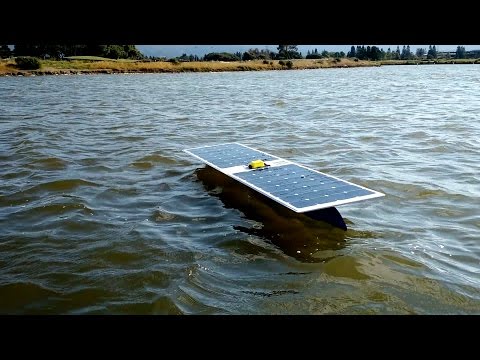
Breaking News
 WOW Canada Is UPPING ITS KILLING EFFORTS By Building SECRET DEATH DENS...
WOW Canada Is UPPING ITS KILLING EFFORTS By Building SECRET DEATH DENS...
 "This Is What They Don't Want You To Know" | Whitney Webb
"This Is What They Don't Want You To Know" | Whitney Webb
 Refueling a NUCLEAR REACTOR - Smarter Every Day 311
Refueling a NUCLEAR REACTOR - Smarter Every Day 311
 My Exclusive Interview With Benjamin Netanyahu! (You didn't see this coming)
My Exclusive Interview With Benjamin Netanyahu! (You didn't see this coming)
Top Tech News
 The 6 Best LLM Tools To Run Models Locally
The 6 Best LLM Tools To Run Models Locally
 Testing My First Sodium-Ion Solar Battery
Testing My First Sodium-Ion Solar Battery
 A man once paralyzed from the waist down now stands on his own, not with machines or wires,...
A man once paralyzed from the waist down now stands on his own, not with machines or wires,...
 Review: Thumb-sized thermal camera turns your phone into a smart tool
Review: Thumb-sized thermal camera turns your phone into a smart tool
 Army To Bring Nuclear Microreactors To Its Bases By 2028
Army To Bring Nuclear Microreactors To Its Bases By 2028
 Nissan Says It's On Track For Solid-State Batteries That Double EV Range By 2028
Nissan Says It's On Track For Solid-State Batteries That Double EV Range By 2028
 Carbon based computers that run on iron
Carbon based computers that run on iron
 Russia flies strategic cruise missile propelled by a nuclear engine
Russia flies strategic cruise missile propelled by a nuclear engine
 100% Free AC & Heat from SOLAR! Airspool Mini Split AC from Santan Solar | Unboxing & Install
100% Free AC & Heat from SOLAR! Airspool Mini Split AC from Santan Solar | Unboxing & Install
 Engineers Discovered the Spectacular Secret to Making 17x Stronger Cement
Engineers Discovered the Spectacular Secret to Making 17x Stronger Cement
SeaCharger completes California to Hawaii ocean adventure

As planned, the solar-powered SeaCharger entered Californian water on May 30, but didn't get very far. A software bug forced the attempt to be abandoned. A couple of weeks later, though, and the 8-foot long craft was on its way again. And just over 41 days after relaunch, it arrived safely at Mahukona, Hawaii.
The aim of the project was to create an unmanned surface vehicle that could cross an ocean using sunlight as its sole energy source. The SeaCharger has a fiberglass-covered foam hull topped by two photovoltaic panels charging a LiFePo4 battery bank housed within a thruster pod suspended beneath the craft. A watertight pod between the solar panels is home to an Arduino-based autopilot, GPS and satellite modem circuitry.
McMillan relaunched the 91-inch long SeaCharger from Half Moon Bay in California on June 11. It managed an average speed of 2.11 knots (2.43 mph) and covered around 58 miles (94 km) per day. Wind and currents did push it around a little on its journey, but after 41.4 days on the water and clocking up 2,413 miles in total, it arrived safely in Hawaii on July 22.



